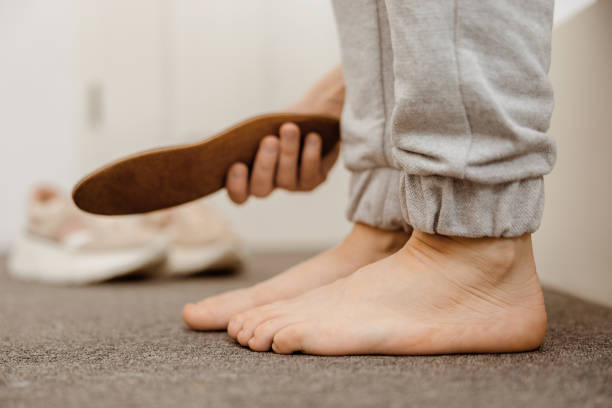The Centers for Advanced Orthopaedics is redefining the way musculoskeletal care is delivered across the region with locations throughout Maryland, DC, Virginia and Pennsylvania.
Flat Feet Facts: Causes, Impact, and Management Techniques

Flat feet, also known as fallen arches, is a condition where the arches on the inside of the feet are flattened, allowing the entire sole of the foot to touch the floor when standing. This common condition can be painless or cause discomfort and lead to other issues. In this blog, we will explore the causes, impacts, and effective management techniques for flat feet, providing valuable insights for those affected.
Cases of Flat Feet:
Flat feet can be caused by a variety of factors. In some people, this condition is inherited and appears during childhood. In others, it develops over time due to aging, obesity, injury, or wear and tear on the feet. Certain conditions like rheumatoid arthritis and diabetes can also contribute to the development of flat feet.
Impact on Daily Life:
While some people with flat feet experience no symptoms, others may suffer from foot pain, particularly in the arch or heel. This pain might worsen with activity. Flat feet can also lead to alignment issues in the legs, potentially causing knee and ankle problems. Additionally, this condition can impact balance and mobility, affecting daily activities and quality of life.
Diagnosis:
Diagnosis of flat feet is usually straightforward. A foot and ankle orthopaedic surgeon will examine the feet and observe the arches while you sit, stand and walk. In some cases, imaging tests such as X-rays, CT scans, or MRIs may be necessary to assess the severity of the condition and rule out other foot problems.
Management Techniques:
- Footwear: Wearing supportive shoes is crucial for managing flat feet. Choose shoes with good arch support and a cushioned sole. Avoid high heels and shoes with little to no support, such as flip flops or ballet flats.
- Orthotics: Custom orthotics or over-the-counter arch supports can help distribute pressure more evenly across your feet.
- Exercises: Certain exercises can strengthen the muscles in your feet and lower legs, improving foot mechanics. Examples include arch lifts, calf raises, and toe curls.
- Weight Management: If you are overweight, losing weight can reduce the pressure on your feet and alleviate symptoms.
- Physical Therapy: A physical therapist can provide exercises tailored to your needs and may use other treatments like ultrasound or electrical stimulation.
- Medication: For pain relief, over-the-counter pain relievers like ibuprofen can be helpful.
Surgical Options:
For some individuals, noninvasive treatments may not be sufficient to alleviate the symptoms of flat feet. Dr. Daniel Cuttica, orthopaedic surgeon of The Orthopaedic Foot & Ankle Center, highlights that "Surgery is indicated when the symptoms of flat feet cause pain and functional limitations and are not improved with noninvasive treatments. The type of surgery and recovery will depend on the cause of the flatfoot. It can involve a tendon and ligament reconstruction with realignment of the foot bones or in severe cases, a fusion of the hindfoot bones."
Living with flat feet can be challenging, but understanding the condition and implementing effective management strategies can greatly reduce discomfort and improve quality of life. If you suspect you have flat feet or experience foot pain, call or book online to schedule an appointment with a foot and ankle orthopaedic physician at The Orthopaedic Foot & Ankle Center.